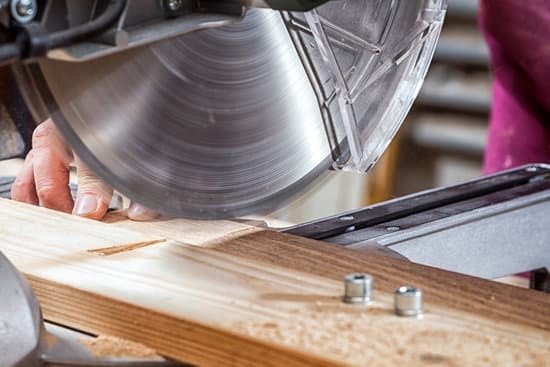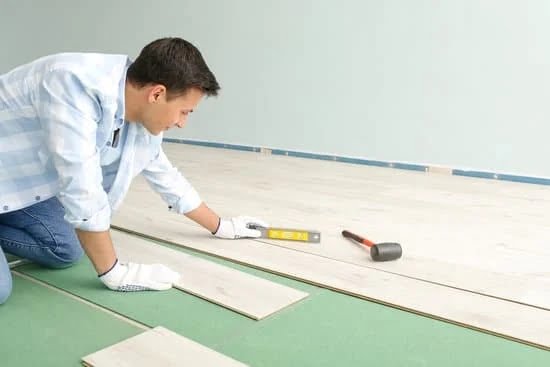
Power tools for woodworking are essential for any project, from constructing a cabinet out of particle board to creating custom furniture pieces out of hardwoods. It is important to understand the advantages and disadvantages of each tool so that you can use them safely and effectively to complete your projects. This article will provide an overview of the various power tools available to woodworkers and discuss how best to use them for maximum results.
Types Of Power Tools For Woodworking: Electric Circular Saw Vs. Hand-Held Router When looking at different types of power tools for woodworking, two popular machines stick out as being essential: the electric circular saw and the hand-held router. While both tools perform their job in a similar way, they do have distinct differences that should be taken into consideration when deciding which one is best for a particular project.
An electric circular saw is ideal for making long straight cuts in large sheets of plywood or other sheet materials; it has powerful enough blade speed to easily cut through thicker materials as well.
A hand-held router is better suited for shaping or routing more intricate details such as edges and curves on small pieces of material or even on larger pieces with detailed patterns and designs carved into them – all while remaining precise and efficient compared to manual carving tools like chisels and gouges.
Maintaining Your Power Tools For Woodworking: Proper Cleaning & Storage The main key to ensuring safety while using power tools for woodworking is proper maintenance and storage, including keeping them clean after each use so they are ready to go next time you need them. After each use, wipe off dust particles from moving parts and always oil any gears before storing away in a dry place such as your garage or workshop – this will help prevent rusting over time.
Additionally, remember not to leave any batteries in the device while it’s not being used; this could cause discharging if left unchecked, damaging the battery and shortening its life span even further. Taking these simple steps can increase the lifespan of your power tool greatly; saving you money in the long run by avoiding costly repairs due to neglect or poor maintenance.
Different Types of Power Tools For Woodworking
Power tools are the go-to tool for making carpentry and woodworking projects easier and more efficient. Professional carpenters take advantage of the technology that these power tools provide, allowing them to work with materials faster and more accurately. Here are some of the most common types of power tools used in carpentry and woodworking:
- Circular Saw – A circular saw is one of the most commonly used types of power saws in woodworking. It has a round blade that cuts across the material surface with ease, allowing you to make straight cuts quickly and accurately.
- Drill – A drill is used to create holes in wood by rotating a drill bit back and forth. It can be used to bore pilot holes or drive screws into material.
- Router – The router is one of the most versatile power tools available for woodworking. It can be used for cutting profiles, grooves, bevels, and other shapes into material.
- Table Saw – The table saw is a powerful machine that uses a spinning blade to make straight cuts in a variety of materials, including wood. It has an adjustable fence to help keep the vision consistent during larger projects.
- Planer – The planer is an important tool for chamfering edges on boards before cutting them down to size. It smoothes surfaces by removing a thin amount of material across its surface.
With these different types of power tools, woodworkers can create amazing pieces with intricate details quickly and precisely. Whether it’s building furniture or creating decorative items for your home, there’s no doubt that having access to powerful and reliable tools makes all the difference when it comes to woodworking projects.
Power tools give any project enhanced realism while speed up production times significantly; they can also produce more precise results than manual hand tools. To get started on your next carpentry or woodworking project, invest in some quality power tools today.
Advantages of Owning Power Tools For Woodworking
Using power tools for woodworking can provide great advantages to any woodworking project. Whether you are a hobbyist or a professional, having the right tool for the job can make the task easier, faster and more efficient. Here are some of the key benefits:
- Cost Savings – With power tools, you will no longer have to purchase separate hand-held tools for each job. You can get all-her-one multi-functional tools that save money by buying in bulk.
- Time Savings – There is no need to spend long hours laboring over a task when you have a power tool like an electric drill or saw at your disposal. Power tools speed up any project and allow you to complete it quicker.
- Safety – Using power tools with proper safety precautions in place can significantly reduce injuries from accidents or other incidents. You also don’t have to worry about strains associated with using manual labor such as lifting heavy weights.
Another advantage of having these powerful machines is their portability. When choosing power tools for woodworking, look for one that will be lightweight yet sturdy enough that it can be taken on trips with ease without compromising on quality. Cordless options offer even more convenience as they don’t require an electrical outlet nearby when in use. This is especially useful for outdoor projects where there may not be electricity available.
Having the right tool for the job means your projects won’t suffer from misusing equipment or poor accuracy. With quality precision pieces such as boresaws and routers, you’ll be able to complete tasks with accuracy and ease. These machines offer top performance and are ideal for intricate projects such as cabinetry and furniture making at all levels of experience from beginner to master craftsman.
Selecting the Appropriate Power Tool For Your Woodworking Project
There are many types of power tools available for any woodworking project. It is important to determine the right tool for your job based upon the size, shape, and type of materials being worked with. Beginner woodworkers may find it helpful to familiarize themselves with these features before choosing a power tool to ensure that they get the most out of their purchase.
One primary factor to consider when selecting a power tool is safety. Many tools require specific safety protocols such as goggles, gloves, or earplugs when being used. Furthermore, some tools should be operated with both hands, which can make complicated projects more difficult to manage safely. Researching the individual safety guidelines of the intended tool is highly recommended before beginning any woodworking task.
Once you have decided on a appropriately safe power tool for your project, you should consider its functionality and capabilities. Different types of power tools can give drastically different results depending on the kind of material they are working on and what type of output you hope to achieve.
For example, a circular saw will provide a sharp cut suited to managed lengths or patterns while an electric planer will provide smoother lines that are better suited for staining or overlaying boards together. Three common categories of power tools used in woodworking include:
- Circular Saws
These are versatile tools capable of making long straight cut through a variety of materials like plywood or hardwood lumber quickly and accurately.
- Electric Planers
Planers are important in making sure boards stay true by ensuring board edges remain straight and level; creating consistent thickness throughout all parts; and producing smooth finishes that allow for easier painting or finishing touches.
- Drills
Power Tool Safety and Maintenance
Woodworking requires precision and attention to detail. Power tools can make the job significantly easier, but only if used safely. It is always important to remember some general safety guidelines before using any power tool.
Before using a power tool, one should always ensure that the power source is functioning properly and that all guards on the machine are in place and operational. Before handling any specific tool, it is important to thoroughly read the manufacturer’s instructions so you are familiar with its function, controls, and safety features.
It is also wise to have first aid on hand in case of injury and wear personal protective equipment such as safety glasses or ear protectors when appropriate.
Once all of these steps have been taken, there are still several steps involved is maintaining your power tools for optimal performance:
- Unplug the power cord before attempting any maintenance.
- Keep blades sharp; dull blades can bind which increases resistance causing premature motor wear.
- Clean the exterior of your tools after each use; make sure to clear away wood chips that could interfere with proper operation.
- Inspect all parts for damage such as broken guards or out-of-alignment bearings
- Lubricate components (such as drill press tables) periodically to reduce friction and prevent wear.
Ensuring your tools are regularly maintained helps provide years of dependable performance and helps keep everyone safe while working in the shop. If you notice any unusual noises or vibrations it may be time to seek professional help from a qualified technician.
Tips To Avoid Making Errors When Using Power Tools
Safety is always paramount when working with power tools, which means that taking some time to double-check measurements, practice using the tool and understand all of its safety features are all important steps. Here are some tips to help you avoid making errors when using power tools:
- Read the manual – understanding each individual piece of equipment you’re using is essential
- Practice on scrap pieces – it’s much better to learn how a tool works on scraps than to make mistakes on workpieces
- Use sharp, correctly fitted blades – blunt or bent blades can be dangerous and less effective
- Check for alterations and obstructions in the path of cut – you need to minimize kickbacks and other accidents
Once you have read the manual, checked any measurements and set up your work area it’s essential to double-check occasionally during use. Regular maintenance helps ensure that the blade doesn’t become faulty due to wear; replace any dull blades and check for any damage. It also pays off in terms of effectiveness – thicker woods require sharper cutting edges while specific projects might require different rates or feeds.
When preparing a piece for cutting, it’s important to take into account where clamps should go so that it isn’t pulled away violently in the event of kickback. It must be secure enough before switching on. Attach any extension cords if necessary but use UL approved ones; taping down twice over will help prevent tripping incidents. Make sure you place your hands well away from damaging objects like moving parts when turning the tool on.
Once operational, periodically check that no chips are caught under the base plate or between its sides as they can result in serious accidents; commencing with gradual curves gives more control over smoother cuts while keeping your body in correct posture prevents fatigue developing too quickly. The speed selected should also depend on material type – wood usually requires slower speeds than nonferrous metal while certain plastics require slower speeds compared with wood.
Recommended Power Tools For Woodworking Professionals
As with any profession, the right tools can be essential for success. Woodworking is no exception, and using the proper tools can make the difference between a professional-grade project and an amateur one. Many woodworkers have specific preferences for their power tools when it comes to handling woodworking tasks, so choosing the right ones will depend on what they plan to use them for.
One of the most important tools for woodworking is undoubtedly the jigsaw. Jigsaws are invaluable for making curved and intricate cuts in tight places that other power saws simply cannot reach.
They also tend to be quite versatile; users can adjust blade speed and pressure depending on thickness of material being cut as well as how intricate of a cut they need to achieve. The main downside is jigsaws tend to cause more vibration than other saws, which can take some getting used to.
After a jigsaw, perhaps one of the most important power tools for woodworkers is a router. Routers come in many shapes and sizes, but all do essentially one job: create decorative edging on any work piece by “routing” – i.e., grinding away small amounts of material from its surface until it has reached the desired shape or look (or at least close enough).
Most routers are powered by electric motors as opposed to gasoline engines like chainsaws, which makes them much smoother to operate and less prone to causing kickback during use (i.e., tool abruptly stopping due lack of control).
Because they require very precise engagement angles when working with certain materials (especially hardwoods), understanding how various bits function from both a safety perspective as well as creating sharp results should be part of any experienced woodworker’s skill set before using a router regularly on projects.
Finally, no list would be complete without mentioning the trusty drill-driver combo kit. Drills come in both cordless battery powered versions or wired models that plug into an electrical outlet; either way, this tool allow users can quickly bore holes into material or directly drive screws and bolts into place by applying torque directly through its bit or adapter head attachments with relatively little effort compared to traditional screwdrivers etc.
Aside from speed advantages against conventional hand-powered tools in almost all cases, drills also provide great comfort in knowing each screw will have been properly fastened due consistent enough torque applied throughout operation without worry about user fatigue when completing large numbers of repetitive task at once (e.g., inserting many screws around frame joint).
Conclusion
Overall, investing in quality power tools is a worthwhile decision for any woodworker. Quality power tools may be more expensive initially, but the longevity and performance of these tools often more than makes up for the initial cost.
Professional-grade tools will cut cleanly, efficiently, and safelyand they’ll stand up to professional level use far better than lower quality options. Woodworking takes time and dedication – having quality powertools can make the process easier, safer, and ultimately drive woodworking projects to greater success.
Quality tools also reduce overall costs by lasting longer than cheaper alternatives. Low-end tools generally provide satisfactory results when used in lightweight projects like small furniture pieces or frames; however when heavier stock is introduced into the equation their lifespan considerably lowers due to wear and tear.
Investing in professional grade hardware not only eliminates this need for replacements over time; it also makes the job much easier by providing improved cutting times thanks to high torque motors as found in many higher end models.
The feed rate achieved with some of these models is fast enough to quickly finish lengthy jobs even on denser materials like hardwoods. From jigsaws to band saws, each type of tool will benefit from careful consideration when selecting from its available range of specs – investing in an optimal machine can work wonders for tackling heavy duty tasks without sacrificing user safety or convenience along the way.
An added bonus is that better quality machines are often designed with user comfort in mind too – reaching a truer angle on a miter saw or controlling a circular blade set with less vibration are both clear advantages here.
Another advantage of spending money on higher end machines is access to better warranty packages. Common warranty coverage varies by manufacturer and may include various elements such as 2-year limited parts replacement warranties or lifetime guarantees on certain components (e.g., belts).
Having peace of mind that your equipment will be safe from any unexpected malfunction can help alleviate financial stress should something go wrong during normal use as well as save time if repairs are covered within warranty periods – all things considered, purchasing quality powerwoodworking tools never hurts.




